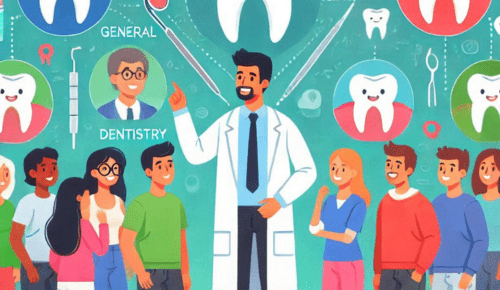
The Basics Of General Dentistry: What Every Patient Should Know
General dentistry lays the foundation for a healthy smile. It covers routine check-ups, cleanings, and essential treatments like fillings and root canals. By focusing on these basics, we ensure our teeth and gums remain in top condition. Many people visit the dentist only when there’s a problem. However, regular dental visits help catch issues early, preventing more serious complications. A cosmetic dentist in Boston, MA might focus on enhancing smiles through whitening or veneers, but underlying general dentistry ensures these enhancements are successful. Understanding the core elements of dentistry is crucial. It involves recognizing the importance of preventive care, knowing when to seek treatment, and maintaining healthy dental habits at home. Remember, brushing and flossing play a big role in daily care. Combined with regular dental visits, these habits help us maintain oral health throughout our lives. By prioritizing these basics, we can keep our smiles lasting and bright.
Preventive Care
Preventive care is the cornerstone of general dentistry. This involves regular dental check-ups and cleanings. By scheduling visits every six months, we catch small issues before they turn into major problems. During these visits, dentists also provide fluoride treatments and sealants to protect teeth from decay.
Preventive care doesn’t stop at the dentist’s office. Good oral hygiene at home is essential. Brushing teeth twice a day with fluoride toothpaste and flossing daily remove plaque. This prevents gum disease and tooth decay. The Centers for Disease Control and Prevention (CDC) emphasizes the importance of these habits in maintaining oral health. Learn more about preventive care from the CDC.
Common Procedures
General dentistry includes various treatments that address common dental issues. Here are three key procedures:
- Fillings: Dentists use fillings to repair cavities and restore tooth function. They remove decayed material and fill the space with materials like amalgam or composite resin.
- Root Canals: This procedure saves a tooth with infected pulp. Dentists remove the infection and seal the tooth to prevent further damage.
- Extractions: Sometimes, a tooth is too damaged to repair. In these cases, dentists remove the tooth to prevent infection and maintain oral health.
Understanding Dental Treatments
It’s important to understand the options available in dental care. Here’s a quick comparison of some common procedures:
| Treatment | Purpose | Materials Used |
| Fillings | Repair cavities | Amalgam, Composite Resin |
| Root Canals | Treat infected pulp | Gutta-percha, Sealants |
| Extractions | Remove damaged teeth | N/A |
Maintaining Oral Health
Beyond procedures, daily habits play a major role in oral health. Here are three key practices:
- Brushing: Use a soft-bristled toothbrush and fluoride toothpaste. Replace the toothbrush every three to four months.
- Flossing: This removes food particles and plaque between teeth where a brush can’t reach.
- Regular Check-ups: Even with good home care, professional cleanings are necessary to remove tartar.
The American Dental Association (ADA) offers extensive resources on maintaining oral health.
Conclusion
Understanding general dentistry helps us maintain our teeth and gums in top condition. By focusing on preventive care and addressing dental issues promptly, we can avoid more serious problems. Remember, good oral hygiene at home is just as important as regular dental visits. These efforts combined ensure our smiles remain bright and healthy for years to come.



